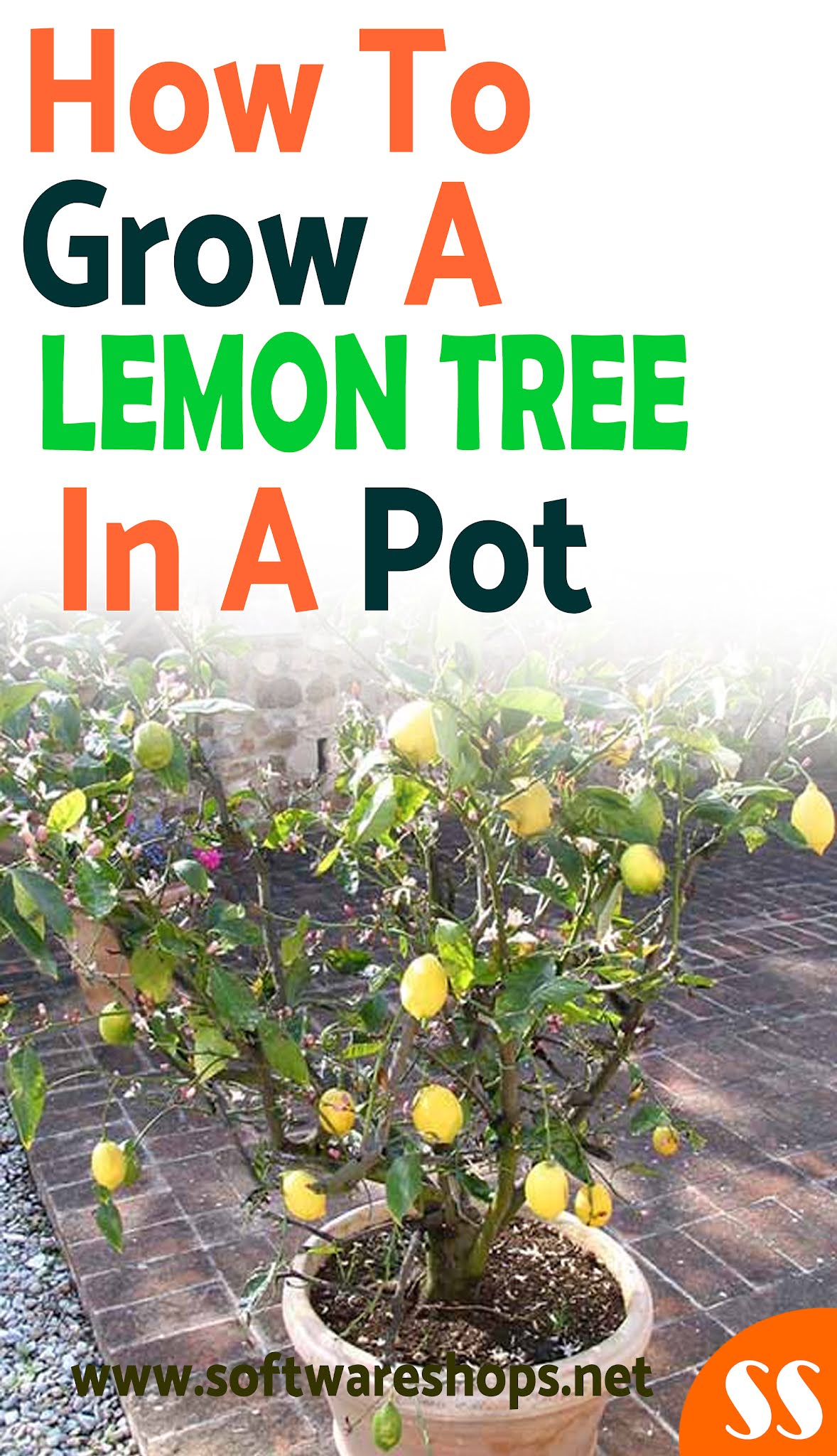I have always wanted to grow lemons but I live in a climate where that just isn’t possible. Well, that’s what I thought until today. See you how easy and awesome it is to grow a lemon tree in a pot in your house!
Why don’t you try growing a lemon tree too. The article has all the info on how to keep it alive and how to thrive. Let me know if you end up growing one.
How to Grow a Lemon Tree in Pot
Choose a pot that is 25% bigger than the root ball of the plant. A clay pot is ideal because, unlike plastic, it is porous and evaporates water from the sides. This helps the lemon tree to grow well as it dislikes being waterlogged.
The quality and type of potting soil is an essential factor, as well. For growing high-yielding plants, use a well-draining potting mix with a lot of organic matter and aged manure.
If you’re growing a lemon tree in a balcony or any other small space, take care of its thorns, keep the plant in a corner.
Requirements for Growing Lemon Tree in a Pot
Location
All plants in the citrus family love full sun, around 7 to 8 hours of sunlight is essential. If growing a lemon tree indoors, position the pot near a window with ample sunlight. You can also substitute the lack of direct light with artificial grow lights.
Soil
Lemon does best in well-draining soil. The pH level of soil should be around 5.5 to 7 as this plant prefers slightly acidic soil to neutral soil. You can also use equal parts of garden soil, cocopeat, and compost.
Watering
The lemon tree requires consistent watering to produce healthy fruits. Giving it too much or too little water can lead to blossom and fruit drop, and sometimes the plant may die too. Check the top 2-inch layer of soil for dryness before watering. On windy and hot days, it requires more frequent watering and slightly moist soil.
Humidity
If you are growing a lemon tree indoors, it requires a certain humidity level to thrive: 50% is ideal. You can maintain humidity by placing it on a pebble tray or using a humidifier.
Re-Potting
Re-pot your lemon tree every couple of years or so at the beginning of spring (in warm climates, winter is the best season). Your pot size should be according to the scale of your tree. Avoid too large or small planters; keep in mind to use a container that is one size bigger than your previously used pot.
How to Grow a Lemon Tree in Pot 2
While growing a lemon tree in a pot in USDA Zones 9 to 11, you don’t need to care for cold that much, but below these zones, special care is needed in harsh winters. Temperature below 30°F (-1 C) is life-threatening for the lemon tree, except ‘Meyer’ lemon variety, which tolerates some cold till 24°F (-4 C).
Freezing temperatures kill citrus plants. The optimum temperature is around 50°F to 82°F (10°C to 28°C). To overwinter it, keep your potted plant indoors or in a greenhouse when the temperature falls below 35°F (2°C).
Pruning and Pinching Lemon Tree
Pinching encourages bushier growth — pinch growing tip when a branch is about 5-6 inches long. Pruning of a lemon tree is best carried out when new growth starts in spring (February-March). You can also do this in fall or late winter in frost-free regions.
Be careful before pruning it, only prune diseased or dead branches or the ones that are reducing airflow. Because lemon stores excess food in its leaves, and too much pruning can result in inferior fruits. Also, keep looking for suckers and prune them immediately if found one.
Fertilizer for Growing Lemon Tree in a Pot
All plants of the citrus family are heavy feeders. Lemon requires fertilizer to produce juicy fruits, lush foliage, and fragrant blooms. Use special-purpose citrus fertilizers for every citrus species plant; if unavailable, use slow-release fertilizer with NPK 12-6-6 or 20-20-20.
Look for a fertilizer that contains micronutrients, especially iron, manganese, and zinc. If you’re not using slow-release fertilizer, give a boost to your lemon tree by applying a water-soluble fertilizer once a month in the growing season. Occasionally, side-dress your plant with compost or well-rotted manure.
Tip: This may sound absurd, but you can pour a cup or two of plain yogurt (without added colorant or flavor) once in 4-6 weeks around the base of a lemon tree to observe the stronger growth.
Pests and Diseases
Pests like mealybugs, spider mites, aphids, and scales occasionally attract toward it. Keep an eye on them. If you see the infestation, apply insecticidal soap, neem oil, or pesticides. To get rid of them organically, read this article.
Harvesting
Harvesting time depends on the type of lemon variety you are growing and your weather conditions. The citrus fruits stop ripening once they are off the tree. To determine if the fruit is ripened, see if the fruit is heavy, soft, and yellow.
Note- The information provided on this page is for general purposes only and should not be taken as professional advice. All the content provided on this page is my own creativity.
Did you enjoy reading this post? If you did, please take a second to share it with your friends. Sharing is caring! Thank you So Much.
